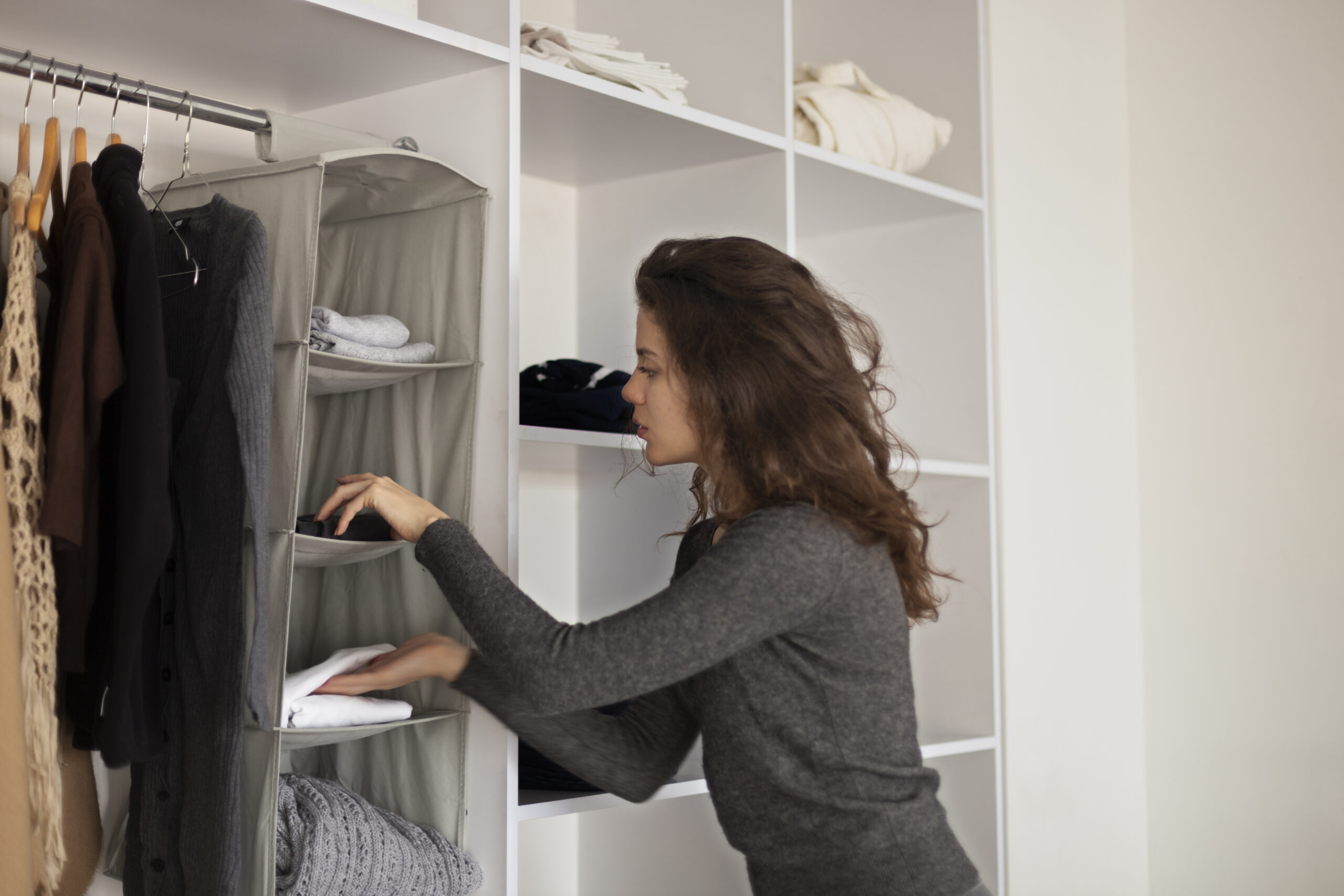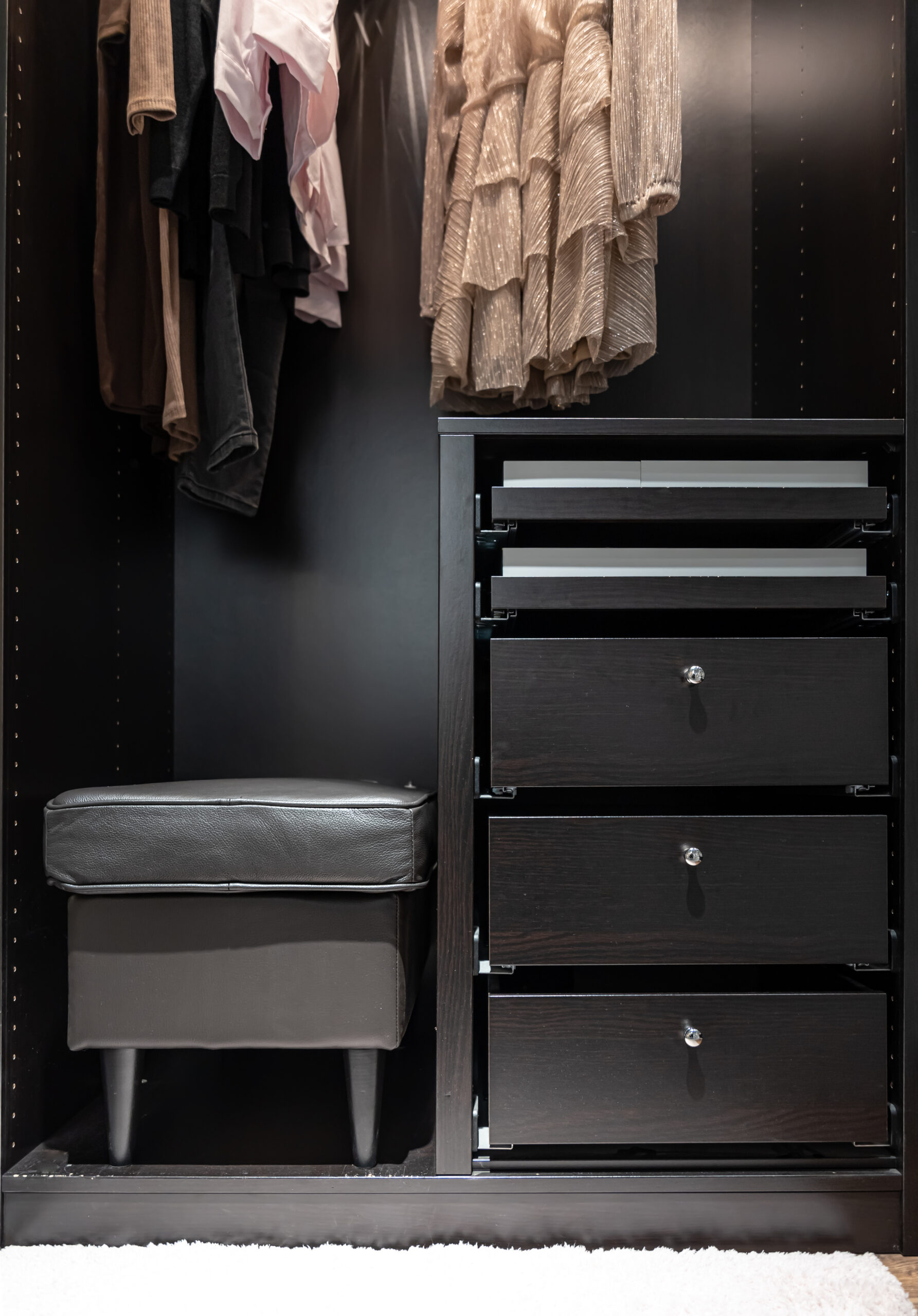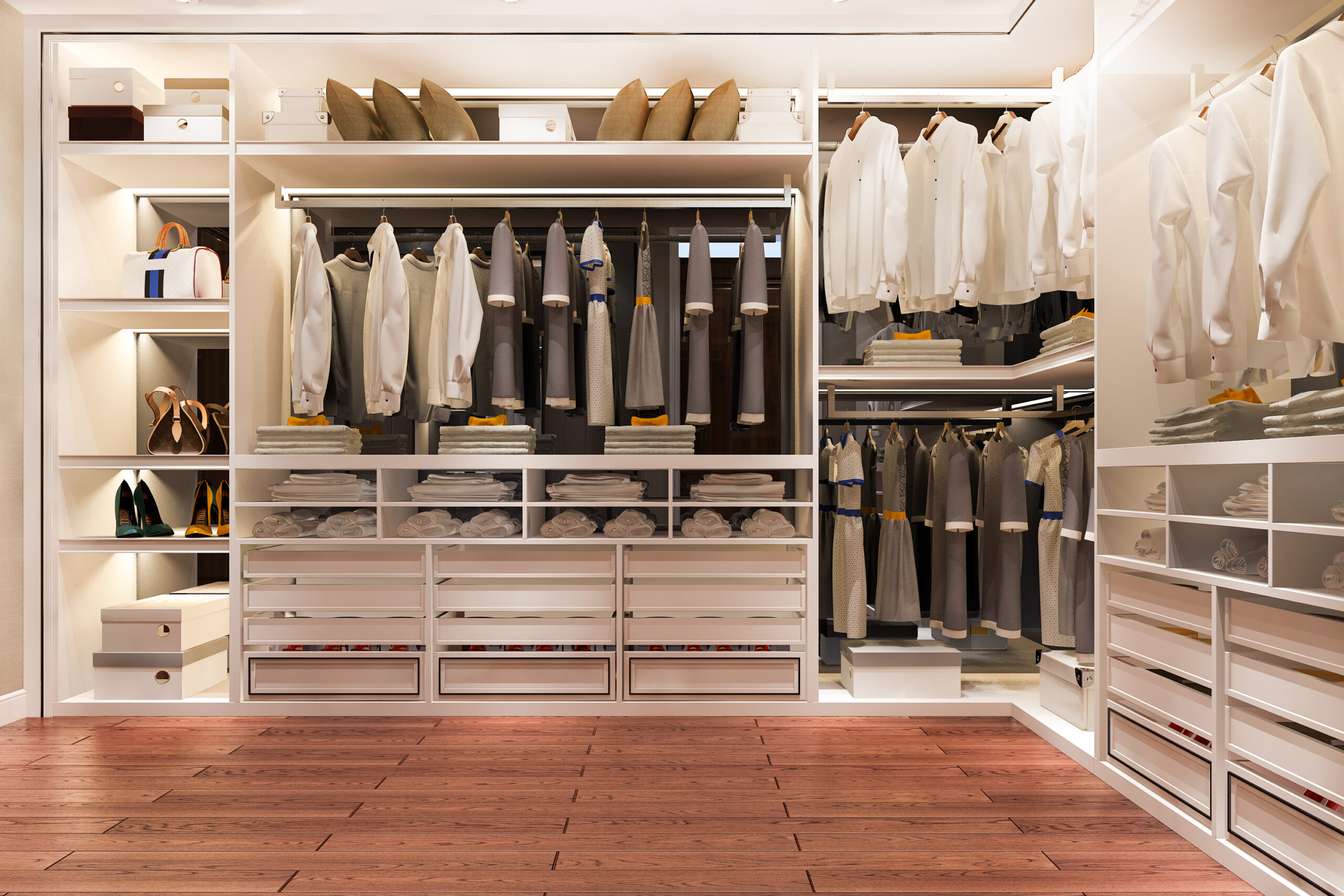DISCOUNTS ARE IN BLOOM! 30% OFF ALL CLOSETS!
Ciri Blog

10 Genius Shoe Storage Solutions: Try a Shoe Cabinet with Drawers
The Importance of Organized Shoe Storage
Maintaining an organized shoe storage system offers both practical and aesthetic benefits for any household. Shoes, when left scattered across floors or tucked into unstructured piles, can quickly contribute to unnecessary clutter. This not only impairs the visual appeal of living spaces but also poses tripping hazards and makes it harder to locate specific pairs when needed.
Proper shoe organization helps protect footwear from wear and damage. Stacked or improperly stored shoes are prone to deformities, scuff marks, and material deterioration. Organizing shoes in a designated storage solution such as a cabinet with drawers ensures that each pair is kept in good condition, extending its lifespan and saving money in the long run. Additionally, such storage systems often feature drawers or compartments specifically designed for different types of footwear, providing room for delicate heels, bulky boots, or everyday sneakers.
An organized shoe storage system also optimizes household efficiency. Time spent searching for misplaced shoes can significantly add up, particularly in busy households with multiple occupants. Clear storage solutions or labeled drawers minimize this problem and support a more seamless daily routine. Furthermore, shoe cabinets with drawers contribute to maintaining a cleaner home. By encouraging a habit of storing footwear neatly, households can prevent the spread of dirt, mud, or outdoor debris across floors.
From a practical standpoint, functionality meets style with well-thought-out shoe storage. Modern furniture designs offer versatile options that can complement various interior décor themes. Whether placed in entryways, closets, or bedroom corners, an organized shoe storage unit maximizes space utilization while contributing to a tidy and polished ambiance.
Benefits of Using Shoe Cabinets with Drawers
Shoe cabinets with drawers provide an efficient, stylish, and highly functional solution for managing footwear in any living space. Unlike traditional storage options, these innovative units combine practicality with aesthetics, offering several distinct advantages.
1. Enhanced Organization
One of the standout benefits of shoe cabinets with drawers is their superior organizational capabilities. The inclusion of drawers allows users to neatly separate and categorize shoes based on type, size, or frequency of use. This eliminates clutter and ensures that specific pairs are always within easy reach.
2. Protects Footwear
By storing shoes in enclosed drawers, they are shielded from dust, moisture, and external damage. This protective feature helps extend the lifespan of footwear, keeping them in pristine condition for longer. Closed storage also prevents pets or children from tampering with shoes.
3. Space-Saving Design
Shoe cabinets with drawers are ideal for maximizing vertical storage in small spaces. By utilizing drawers instead of open shelves, these cabinets provide a streamlined appearance while accommodating multiple pairs of shoes. Some models even fit seamlessly in narrow entryways or closets.
4. Versatility and Customization
These cabinets come in various styles, finishes, and configurations, ensuring they complement any interior design. Many models also feature adjustable or removable drawers to accommodate taller footwear like boots or to repurpose sections for other storage needs.
5. Conceals Unwanted Clutter
Visible shoe racks can contribute to a cluttered appearance. Shoe cabinets with drawers neatly hide the mess, keeping spaces visually clean and inviting. This benefit makes them an excellent choice for fostering a minimalist and organized home environment.
6. Easy Maintenance
The structured design of cabinets makes them easy to clean and maintain. Most drawers can be slid out effortlessly for wiping, ensuring the entire unit stays hygienic. This is particularly beneficial in keeping dirt or odors contained.
By combining form, function, and durability, shoe cabinets with drawers stand out as a versatile storage option for footwear management in any household.
Understanding Different Types of Shoe Cabinets
Shoe cabinets come in a variety of styles, sizes, and designs to meet the diverse needs and preferences of homeowners. Understanding the different types helps in selecting the right one for a specific space and individual requirements. Each type offers a unique blend of functionality, aesthetic appeal, and space-saving features.
1. Standard Shoe Cabinets
Standard shoe cabinets feature open shelves or closed compartments that are suitable for casual use. They often come in various heights and widths, able to accommodate multiple pairs of shoes. Many models include adjustable shelves for flexibility, making them practical for households with shoes of varying sizes and shapes.
2. Shoe Cabinets with Drawers
Shoe cabinets with drawers are designed for those who prefer to keep their footwear neatly hidden. These types utilize pull-out or sliding drawers, often with built-in dividers or sections to organize shoes. Their closed design keeps dust at bay while offering a clean, minimalist appearance, perfect for modern interiors.
3. Over-the-Door Shoe Cabinets
Over-the-door models attach securely to doors, utilizing vertical space efficiently. These options are ideal for spaces where floor area is limited, such as apartments or dormitories. They often include pockets, hooks, or tiered shelving, making them versatile for storing a variety of footwear styles.
4. Rotating Shoe Cabinets
Rotating cabinets, also called revolving or carousel shoe cabinets, are a unique addition. Their circular or turntable design allows easy access to shoes without requiring additional walking space. These are an excellent solution for corners or small walk-in closets.
5. Bench-Style Shoe Cabinets
Combining storage and seating, bench-style cabinets include compartments or cubbies below the seat. This dual-purpose furniture works well in entryways, providing a convenient spot to sit while putting on shoes. They’re available in varied designs to complement interior decor.
Transitioning between different types, it is essential to consider the available space and organizational needs. For homes requiring concealed storage, drawer-based and rotating models stand out. In contrast, over-the-door and bench-style options cater to users looking for practicality in compact spaces. Keeping these distinctions in mind can greatly simplify the decision-making process.
How to Choose the Right Shoe Cabinet for Your Space
Selecting the ideal shoe cabinet with drawers involves evaluating several key factors to ensure it complements both your space and storage needs. Understanding the available options and aligning them with your personal requirements is essential for making an informed decision.
Consider the Size of Your Space
Begin by measuring the designated area where the cabinet will be placed. Ensure there is adequate room for the cabinet to fit comfortably without obstructing walkways or other furniture. Compact spaces may benefit from slim-profile cabinets or wall-mounted designs, while larger areas can accommodate wider, freestanding units.
Assess Your Storage Needs
Evaluate the number of shoes you need to store and their styles. Families or individuals with extensive collections should opt for cabinets with multiple drawers or higher stacking capacity. For those who own a mix of heels, boots, and sneakers, adjustable dividers or varying drawer heights can help accommodate diverse shoe sizes.
Match the Style to Your Décor
The design and finish of the shoe cabinet should blend seamlessly with your existing interior style. Choose materials such as wood for traditional or rustic spaces, or go with metal or high-gloss finishes for a modern look. Neutral colors like white, black, or gray tend to complement most themes, while bold colors can act as an accent feature.
Prioritize Functionality
Features such as soft-close drawers, ventilation panels, or anti-slip bases add to the cabinet’s usability. Some designs also integrate a seating area or additional shelves for multipurpose functionality. Consider how these extras may enhance convenience and organization.
Budget and Durability
Determine a budget range before shopping, ensuring the chosen cabinet balances affordability and quality. Look for sturdy materials like solid wood or metal for longevity, especially in high-use areas like entryways or mudrooms.
By carefully assessing these factors, one can select a shoe cabinet that not only improves organization but also elevates the aesthetics of a living space.
Creative Placement Ideas for Shoe Storage Units
Shoe storage units can integrate seamlessly into home design with thoughtful placement, transforming clutter into stylish organization. Their versatility allows for innovative positioning across various rooms, ensuring both convenience and aesthetic appeal.
Entryways and Mudrooms
Strategically placing shoe storage units near entryways or mudrooms ensures immediate access to footwear, reducing clutter at the door. Shoe cabinets with drawers can double as a perch for sitting while removing or wearing shoes. Nestling the unit against a wall maximizes floor space, while decorative elements like mirrors or artwork above can enhance visual appeal.
Bedroom Closets
Incorporating shoe cabinets or units inside bedroom closets optimizes organization while avoiding disruption to the room’s overall decor. Taller cabinets with multiple drawers can be tucked into unused corners or placed beneath hanging clothes to utilize vertical space.
Hallways
Slim-profile shoe storage solutions fit snugly into narrow hallways, creating a sleek corridor while maintaining practical access to footwear. Units with closed drawers ensure a clean, streamlined look, while open shelves can showcase stylish shoes complementing the interior design.
Under the Stairs
The space beneath a staircase is perfect for accommodating shoe storage units. Custom-built solutions can transform this often underutilized area into a functional shoe organization hub. Incorporating cabinets in this space adds both character and practicality to the home.
Living Room
Though unconventional, curated shoe storage can serve as functional decor in the living room. Small cabinets can be styled with vases or books on top, blending shoes seamlessly into the design while providing easy access.
Garage
For homes with garages, shoe storage units near the door connecting to the house can act as transitional storage. Heavy-duty cabinets work well to store outdoor or seasonal footwear, keeping dirt and moisture contained.
By strategically placing shoe storage units, homeowners can enhance the harmony between functionality and visual appeal, leveraging overlooked spaces throughout the home for a clutter-free environment.
Maximizing Small Space: Compact Shoe Cabinets with Drawers
Compact shoe cabinets with drawers present an ideal solution for individuals managing limited space while striving for an organized home environment. Designed to fit seamlessly into smaller areas, such cabinets allow for efficient use of vertical and horizontal space, catering to both functionality and aesthetics. They serve as a practical option for those seeking clutter-free storage without sacrificing style.
One of the critical features of compact shoe cabinets is their slim profiles, making them suitable for narrow entryways, closets, or even under staircases. These cabinets often include multiple narrow shelves or vertical compartments to store shoes of varying sizes. Additionally, the inclusion of drawers atop the shoe compartments adds versatility, offering room to store accessories like shoe polish, laces, socks, or keys.
Advantages of compact shoe cabinets with drawers include:
- Space optimization: Their slim, vertical designs maximize storage where floor space is limited.
- Dual-purpose storage: Drawers provide additional utility, reducing the need for separate storage units.
- Aesthetic appeal: Many modern designs combine sleek finishes and minimalist styles, harmonizing with diverse interior décor.
Material options for compact shoe cabinets range from sturdy engineered wood to lightweight metal and durable plastic, allowing buyers to choose according to their stylistic and budgetary preferences. Models with sliding doors or drop-front panels further enhance the space-saving capabilities, as they eliminate the need for additional clearance. Some units even come equipped with adjustable shelves or modular features, ensuring flexibility in accommodating everything from kids’ sneakers to adult boots.
When selecting such a cabinet, factors like size, material, and configuration should be considered carefully. Proper measurements of the intended space ensure a perfect fit, while opting for high-quality materials guarantees longevity. Compact shoe cabinets with drawers revolutionize storage for small spaces by marrying practicality with sophisticated design.
DIY Shoe Storage Hacks to Complement Your Cabinet
For individuals seeking additional storage solutions to pair with their shoe cabinet, creative DIY hacks can help maximize both space and functionality. These hacks are often budget-friendly and allow for customized solutions tailored to specific needs.
1. Utilize PVC Pipes for Vertical Storage
Cut PVC pipes into equal-sized sections and stack them horizontally in a sturdy frame or glue them together to form a honeycomb-like structure. This setup can be placed inside or on top of a shoe cabinet, offering an innovative way to store smaller shoes, like flats or sandals, vertically while saving space.
2. Add Over-the-Door Organizers
Over-the-door shoe organizers with pockets can provide efficient extra capacity. Hang one on the back of a closet door or even on the side of the shoe cabinet. These are ideal for storing lightweight shoes or accessories such as socks and shoe care products.
3. Repurpose Wooden Crates
Wooden crates can be painted or stained to match your existing cabinet aesthetic. Stack or mount them to the wall near the cabinet, creating readily accessible shelves for heavier shoes or boots. This adds a rustic charm to your storage while keeping things organized.
4. Install Floating Shelves for Displayable Shoes
For a more decorative option, floating shelves can be installed on the wall above your shoe cabinet. This hack works particularly well for showcasing stylish footwear or high-heeled shoes, doubling as both storage and a design element.
5. Use Tension Rods for Adjustable Options
Tension rods placed inside a cabinet or open shelving unit create customizable spaces for shoes. Adjust the spacing to accommodate different sizes, such as children’s shoes or taller boots. This flexible solution offers functionality without requiring permanent modifications.
Strategically blending these DIY storage ideas with a cabinet system can optimize shoe organization while enhancing overall décor.
Maintaining and Cleaning Your Shoe Cabinet
Proper upkeep of a shoe cabinet with drawers is essential for ensuring its longevity and maintaining an organized, polished look. Regular cleaning and maintenance not only preserve the cabinet’s aesthetic appeal but also enhance its functionality, making it easier to store and retrieve footwear.
Cleaning the Exterior
To clean the exterior of the shoe cabinet:
- Dust the surface regularly. Use a microfiber cloth or feather duster to remove dirt and debris. A weekly wipe-down is ideal for maintaining a clean appearance.
- Use appropriate cleaning solutions. Select cleaners based on the material of the cabinet. For wooden cabinets, a wood-safe polish or mild soap diluted in water works well. For laminate or metal, use a general-purpose cleaner that doesn’t leave residue.
- Avoid abrasive tools. Refrain from using brushes with harsh bristles or scrubbing pads that can scratch delicate surfaces.
Organizing the Interior
Maintaining the interior involves the following steps:
- Clear out clutter. Periodically check the drawers and remove sneakers, sandals, or boots that are out of season or unworn. This prevents overcrowding.
- Vacuum or wipe the drawers. Dust and debris can accumulate inside drawers over time. Use a handheld vacuum or damp cloth to clean the interiors.
- Utilize drawer liners. Adding liners can protect drawers from dirt, stains, and wear.
Moisture Protection
One of the greatest threats to shoe cabinets is moisture. Prevent damage by:
- Using dehumidifiers or silica gel packets. Place these inside the cabinet to absorb excess humidity.
- Inspect for mold or mildew. Check the cabinet routinely for early signs of moisture damage, especially in high-humidity environments.
Proper Handling Practices
Lastly, encourage proper usage habits:
- Ensure shoes are clean before placing them inside drawers to avoid stains and odors.
- Avoid overloading drawers, which can damage sliding mechanisms over time.
- Handle drawers gently to reduce wear and tear.
By incorporating these cleaning and maintenance practices, the shoe cabinet remains functional and stylish for years to come while ensuring a pleasant, clutter-free environment.
Stylish and Functional Shoe Cabinet Designs
Shoe cabinets with drawers embody the perfect blend of style and practicality, appealing to homeowners seeking an organized and visually pleasing solution for shoe storage. Available in a variety of materials, colors, and configurations, these cabinets cater to diverse aesthetic preferences and functional needs. Whether for a modern apartment or a traditional home, their versatility ensures they complement any interior design scheme.
Design innovation plays a crucial role in these cabinets. For a minimalist home, sleek cabinets with clean lines and neutral tones offer a streamlined appearance, while still maintaining functionality through spacious drawers. For a rustic or industrial vibe, options crafted from reclaimed wood or featuring metal accents blend seamlessly with vintage décor.
Multifunctionality is a hallmark of well-designed shoe cabinets. Some models feature a combination of shoe storage and additional compartments for accessories such as umbrellas, keys, or cleaning supplies. Others dual-purpose as a seating bench, integrating a cushioned top for comfort while putting on or taking off shoes. This dual utility makes them particularly ideal for smaller spaces, where maximizing functionality without compromising on style is critical.
Different drawer mechanisms further highlight the practicality of these designs. From sliding drawers that provide easy access to tilt-out compartments that save space, homeowners can select features that meet their organizational goals. Ventilated drawers also address concerns about shoe odor by improving airflow and reducing moisture build-up. Many models even include adjustable dividers, enabling customization for various shoe sizes and styles.
The blend of aesthetics with thoughtful functionality makes shoe cabinets with drawers an invaluable addition to any home. Such designs not only declutter but also elevate the overall ambiance of the entryway or closet space.
Alternative Storage Solutions for a Shoe Overflow
When faced with a surplus of footwear, finding practical storage solutions is essential. While a shoe cabinet with drawers offers organization and accessibility, alternative storage options can accommodate various needs, spaces, and aesthetics. These solutions are tailored for individuals seeking creative ways to keep their shoe collection orderly without sacrificing style.
Over-the-Door Organizers
Over-the-door shoe organizers are space-efficient options ideal for small homes or apartments. These systems feature multiple pockets designed to hold individual pairs, making them both compact and easily accessible. They can be hung without tools and adapt well to closets or bedroom doors. For those managing a growing shoe collection, these organizers provide a low-profile alternative that maximizes vertical space.
Under-Bed Storage
Under-bed storage bins or rolling containers serve as an effective way to utilize often-overlooked areas. Transparent or labeled bins allow owners to quickly locate specific pairs while keeping shoes protected from dust. This solution works exceptionally well for seasonal footwear or pairs that are rarely worn. Rolling storage provides added convenience, enabling effortless retrieval.
Free-Standing Racks
Free-standing shoe racks cater to varied shoe styles and sizes while offering an open design for visibility. Stackable racks can grow with collections, and adjustable tiers accommodate boots, heels, and sneakers alike. Placing these racks in entryways or closets ensures shoes remain tidy and ready for use.
Hanging Closet Solutions
Closet space can be optimized with hanging storage systems that drape over rods. Featuring slots or compartments for individual pairs, these systems are perfect for shoe enthusiasts looking to keep collections off the floor. With lightweight construction, they are easy to install and adapt to most wardrobe setups.
Decorative Baskets
For those seeking a blend of practicality and charm, decorative baskets provide an appealing option. These baskets can hold shoes while enriching room aesthetics. Placed under benches, entryway tables, or in corners, they are particularly effective for casual footwear, slippers, or flip-flops.
Modular Cube Units
Modular storage systems offer flexibility through customizable configurations. Each cube can store multiple pairs or larger, more cumbersome footwear. When stacked vertically or horizontally, the cubes adapt to spatial limitations and blend seamlessly with modern interiors.
Transitioning to alternative solutions allows individuals to address shoe overflow with ingenuity. By selecting options that cater to their needs and space constraints, they achieve a balance of functionality and style.
Devon Lane

- Genel (16)
- Home Improvement (3)
- Reinvent Your Wardrobe with Modular Shelving Systems 08/26/2025
- Create Your Own Dressing Room: Walk-In Closet Ideas and Inspiration 08/18/2025
- Big Solutions for Small Spaces: Organized Living with Modular Closet Systems 08/10/2025
- 5 Easy Cabinet Assembly Tips for Hassle-Free Pi Closets Installation 08/02/2025
- 10 Genius Shoe Storage Solutions: Try a Shoe Cabinet with Drawers 07/25/2025






